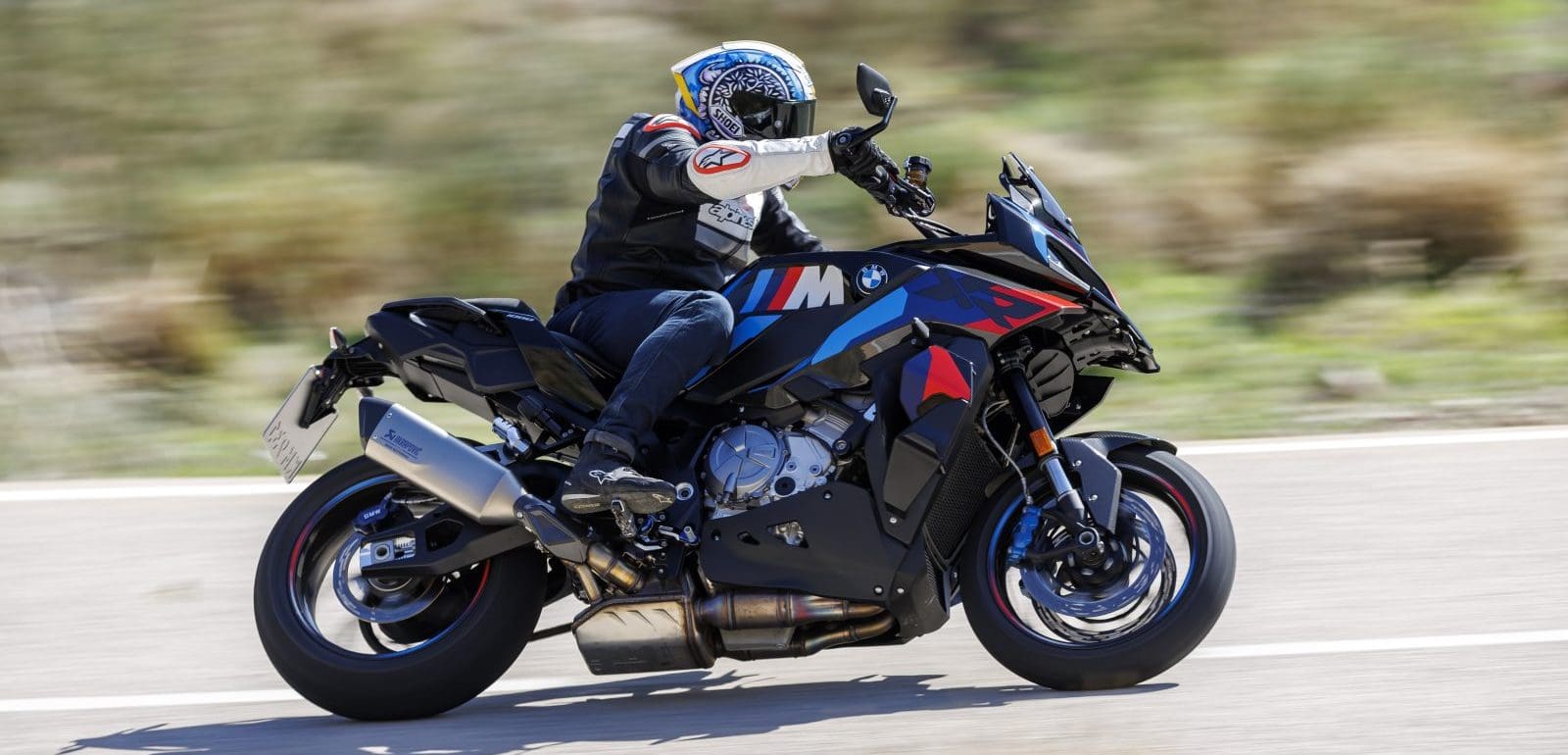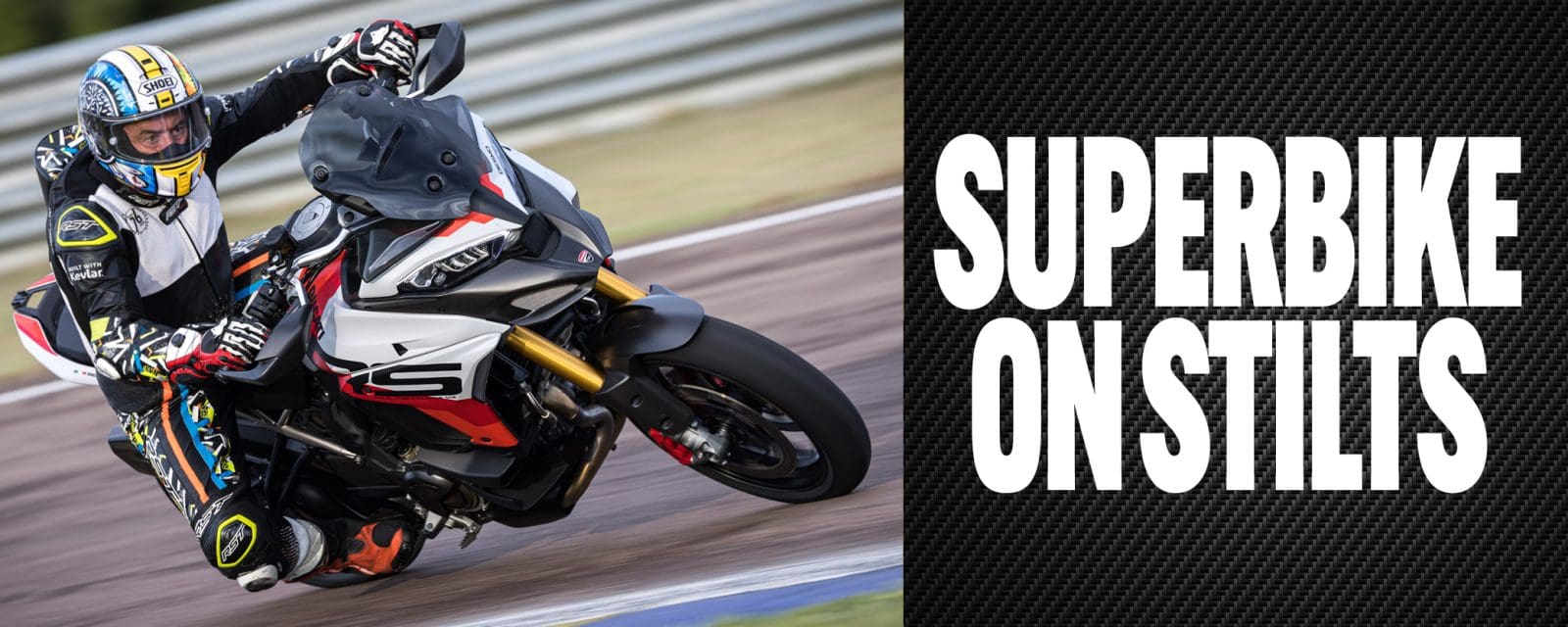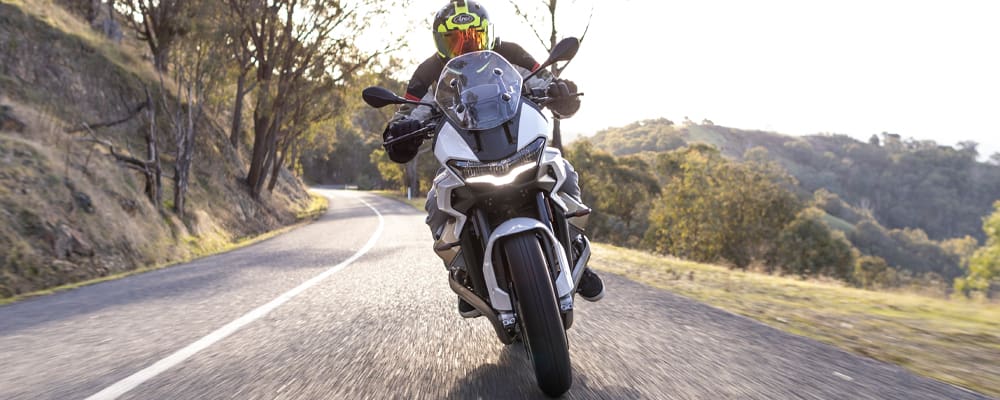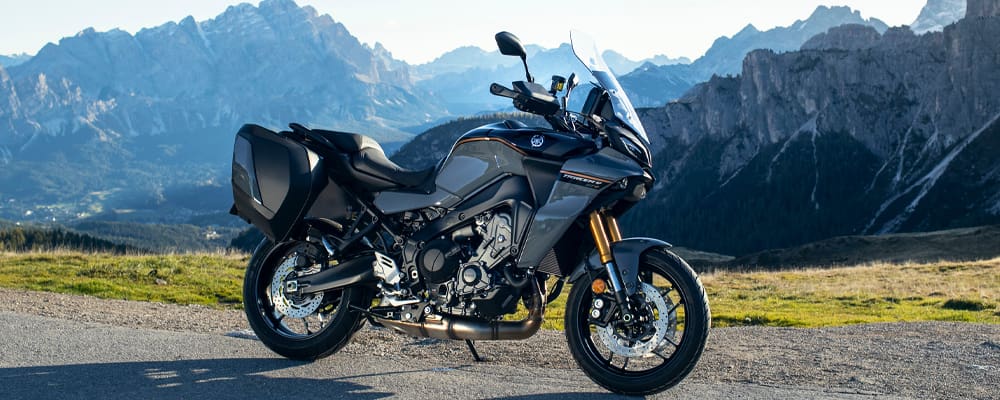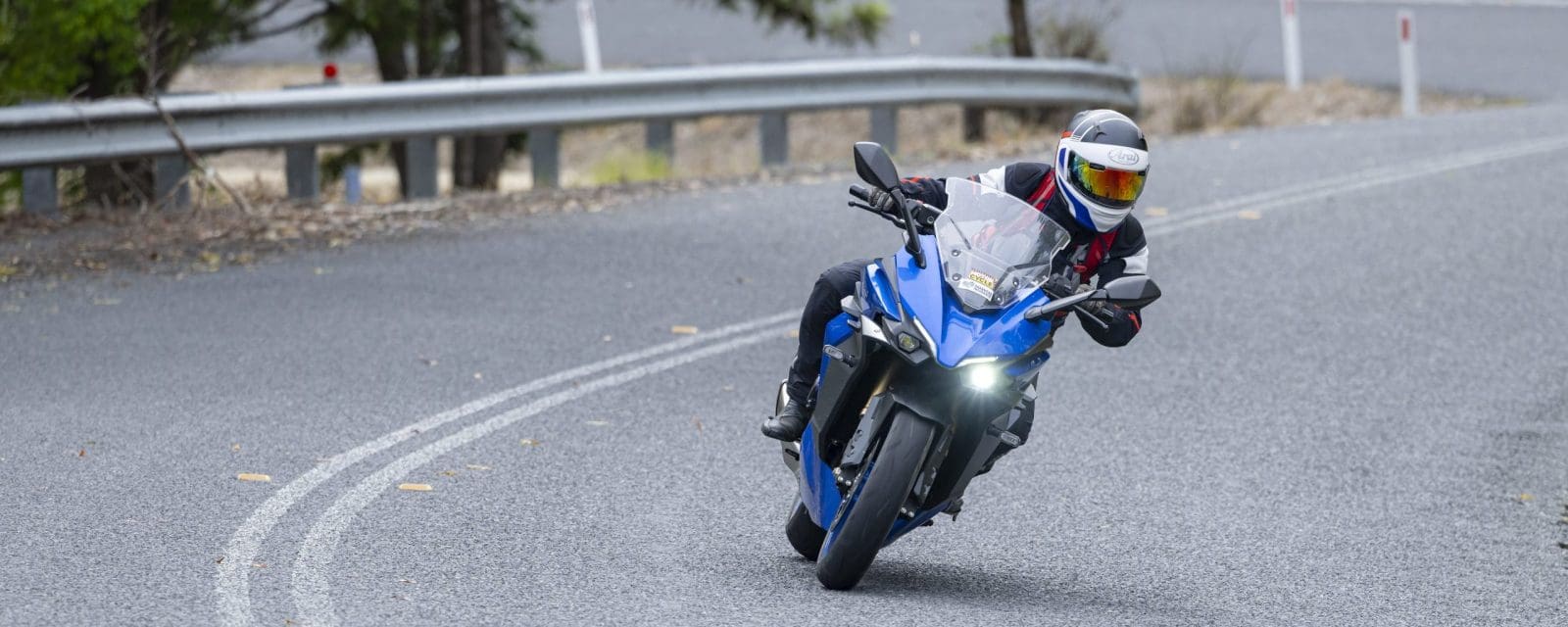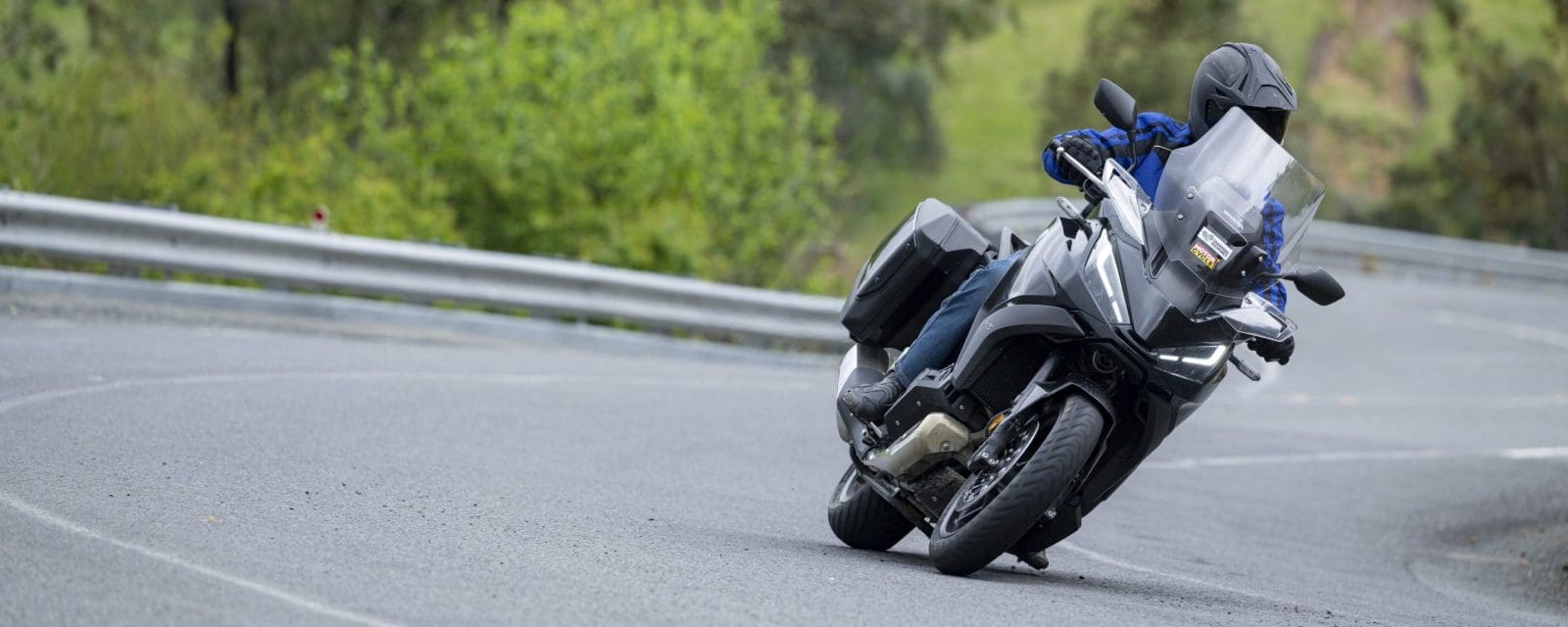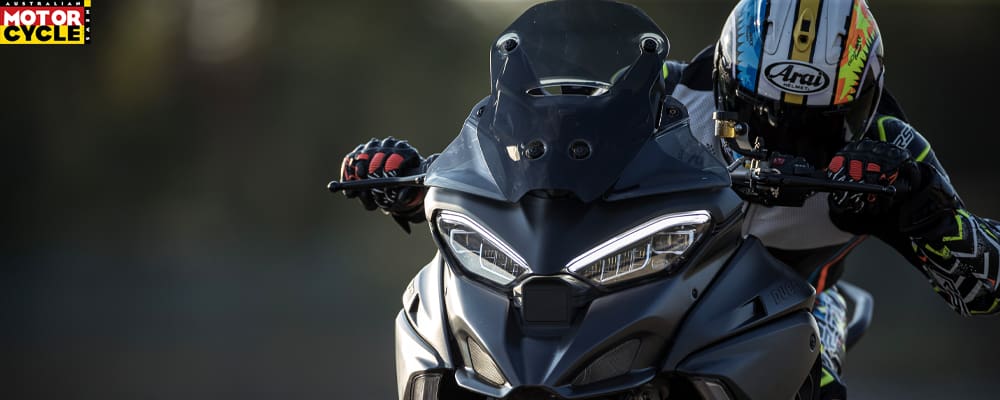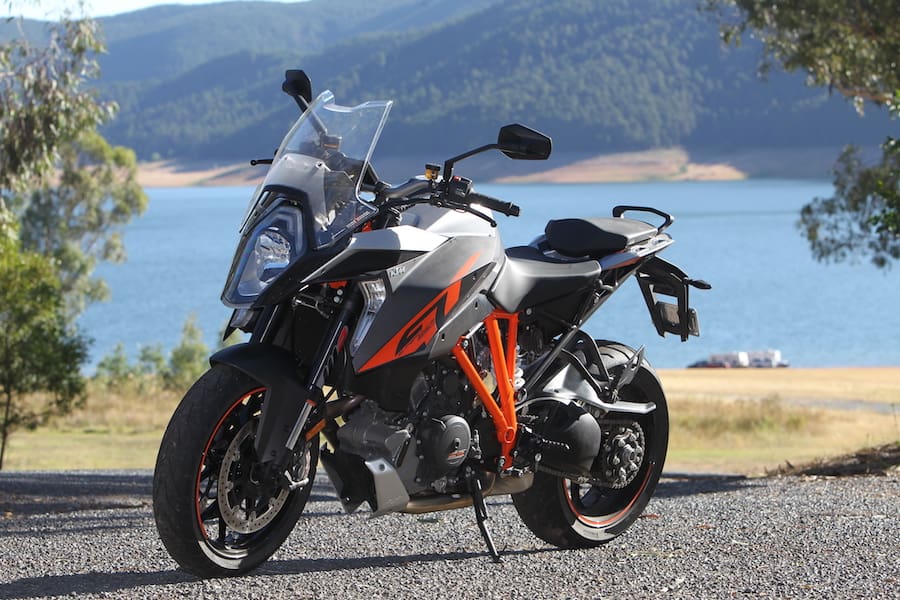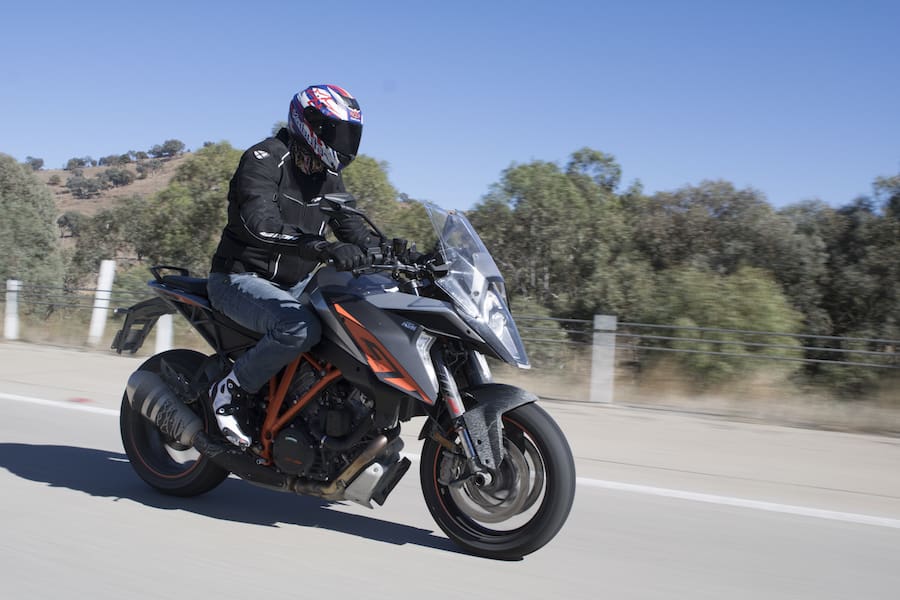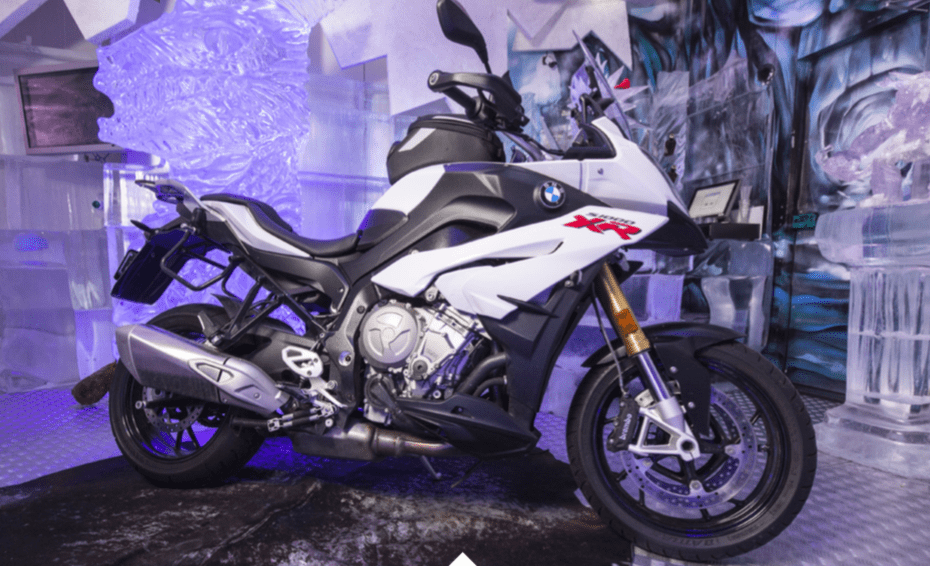Once full of quirks, devoid of modern tech and running with an utter old-school vibe, the Piaggio group has dragged Moto Guzzi into the now with the release of the V100 Mandello. The all-new, tech-savvy 1042cc V-twin, on paper at least, has shunted the Italian manufacturer in a whole new direction.
I must confess that I wasn’t buying the hype about the new V100 Mandello; modern, capable, fast, comfortable… but after riding the V100 Mandello and the tricked-up S version, I must humbly concede that I am very, very impressed. As much as traditional Guzzi riders might not like to hear this, the V100 is ready for the masses, yet hasn’t lost too much of the character that Guzzis are renowned for; it’s just that this time it’s there on purpose rather than being the side effect of, well, its unique Italian approach to engineering.

The V100 has logged several firsts for the 101-year-old brand. It is the first liquid-cooled production Guzzi, the first with modern electronics thrown at it including a six-axis IMU, and it’s also the first production motorcycle from any manufacturer to feature active aerodynamics.

But let’s get down to what is arguably the most important feature of the new V100 – the engine. The heads of the 1042cc V-twin jutting out from under the 17-litre tank have all the hallmarks of a Guzzi, but that’s about the extent of the similarities to any Guzzi I’ve ever ridden. The engine maintains the 90° transverse V-twin layout but is far more compact than previous mills. Rather than the header pipes jutting forward, the cylinder heads have been spun 90° so the headers now exit from the side, which is said to reduce the heat hitting the rider and optimises the intake and fuel injection positioning.

The engine is beautifully balanced – and even the kick to the left when you rev a Guzzi has been reduced. There’s no doubt it still exists, but it’s subtle – a feature rather than a quirk – and nothing that affects handling or will feel strange to those new to the brand. In fact, after riding the V100, I reckon there might just be a few more new recruits to the Guzzi cause.

With a modern Euro 5-compliant engine comes performance, and it’s not lacking that. But first, let’s compare notes. The Mandello’s new powerplant is capable of a claimed peak output of 84.6kW (115hp) of power at 8700rpm and 105Nm of torque at 6750rpm. By comparison, the company’s V85 TT, the next most powerful of the range which uses the 853cc two-valve air-cooled donk, is putting out 56kW (75hp) of power and 82Nm of torque. So comparing engine performance between old and new is like apples and oranges.

The V100 is a torque monster. According to Moto Guzzi, 82 percent of the Mandello’s torque is available at just 3500rpm – and it’s hard to argue. It’s cruiser-esque in the way it delivers low-down grunt, but unlike most cruisers the V100 has legs up top, too. It’s a fast, versatile and glorious motor that allows you to glide around using the grunt while checking the view, but it’ll switch into fast and furious mode once the twin gets spinning feverishly with solid power kicking in around 7000rpm, pulling clean and strong right through to near redline. I can’t speak highly enough of the new engine: it’s got the character and it’s certainly got the talent!
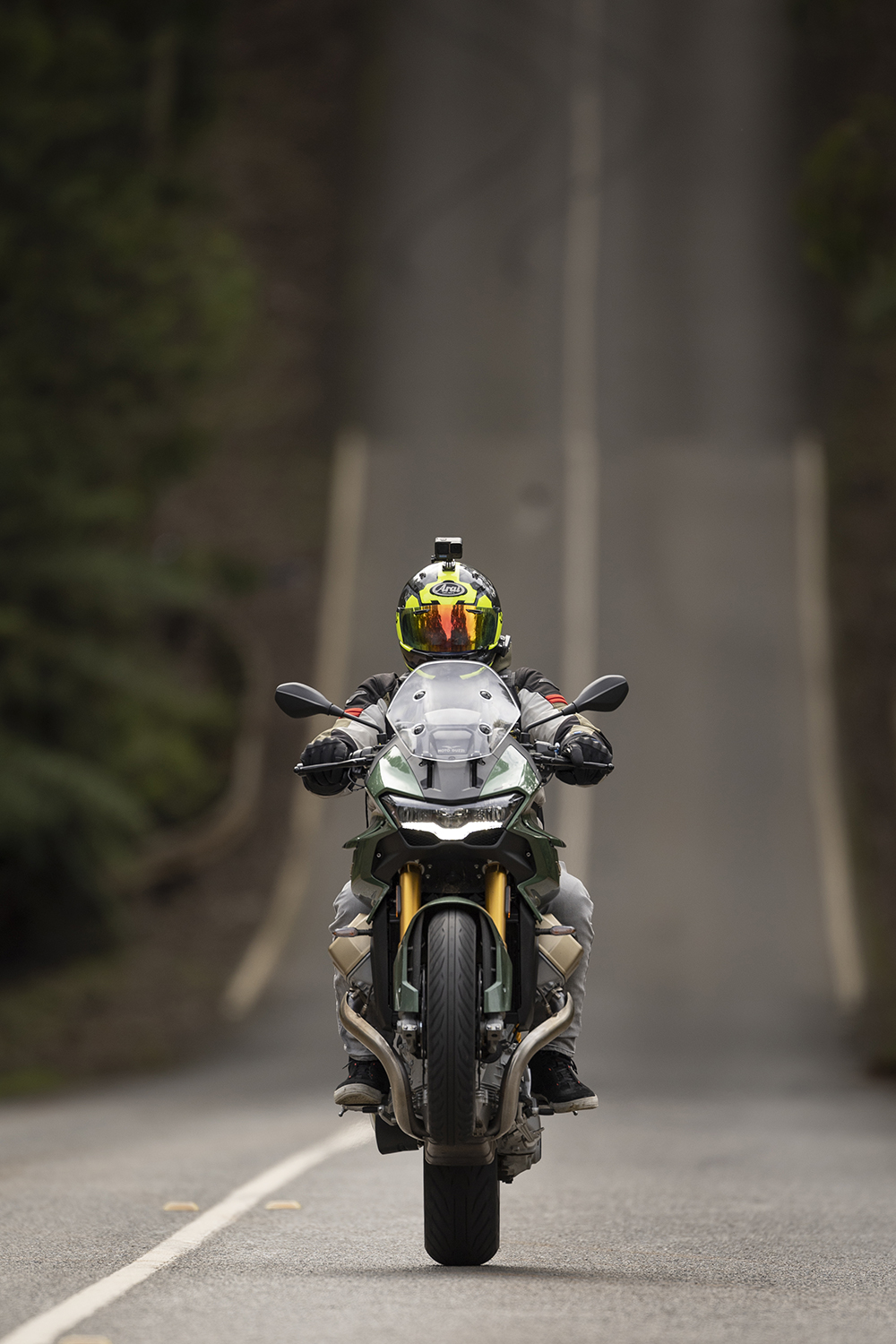
The neddies are pumped through a six-speed ’box, paired to a wet rather than dry clutch, with a slipper function that stops the big twin from getting out of shape on downshifts. Energy is then funnelled to the back wheel via shaftdrive which forms part of the single-sided swingarm that shows off what must be one of the best-looking rear wheels in motorcycling.

There is a clunk and shunt as you snick into first gear. It feels like the clutch isn’t adjusted properly but it’s just part of the experience. Otherwise, the gearbox is sweet with a firm, positive change, and the quickshifter on the S model is one of the better units on the market. The V100 is a sporty machine and perhaps shaving a few kilograms off the claimed 233kg (wet) weight by using a chain drive would pay dividends, but that really would be a step too far for Guzzi purists.

So, engine and drivetrain… tick! But what about handling? Well, this is like no other Guzzi in recent history. It goes, handles and stops and, dead set, you could upset many a sportsbike rider on the V100. It’s as good as it is surprising when the roads get twisty.

The standard V100 is fitted with a KYB 41mm USD fork with adjustable preload and rebound damping, and a KYB monoshock on the rear with rebound and external preload adjustment. The KYB kit is firm without being uncomfortably so, even with my 105kg on it. That may mean it’s a touch firm for lighter riders, but there’s enough adjustment on hand that you should be able to dial that out. As it sits with factory settings I wouldn’t play with it too much, and the only thing that presented itself was a tendency to skip around a bit through bumpy corners if I hit them at speed.

The standard setup is impressive, and I wondered if spending the extra $4000 on the semi-active Öhlins-shod V100 Mandello S could be justified. Until I rode the S, anyway! Although you get some other extras on the S I’d pay the extra dough just for 43mm Öhlins Smart EC2.0 fork and snazzy Öhlins TTX monoshock. It is flawless for road riding, either on the cruise or on the stops!

At 233kg dripping wet, the V100 is well in the sports-tourer ballpark, but having said that it just doesn’t feel that heavy. At standstill or when rolling it feels light and nimble, and with an accessible 815mm seat height it’s not a daunting prospect even for shorter riders.

The V100 is pulled up courtesy of Brembo’s four-piston monobloc calipers squeezing twin 320mm discs on the front and a twin-piston caliper and 280mm disc on the rear. Thanks to the addition of the V100’s six-axis IMU, the braking package features cornering ABS to keep things upright. Braking is strong: plenty of power and feel and you can feel the cornering ABS intervening when you’re braking hard.
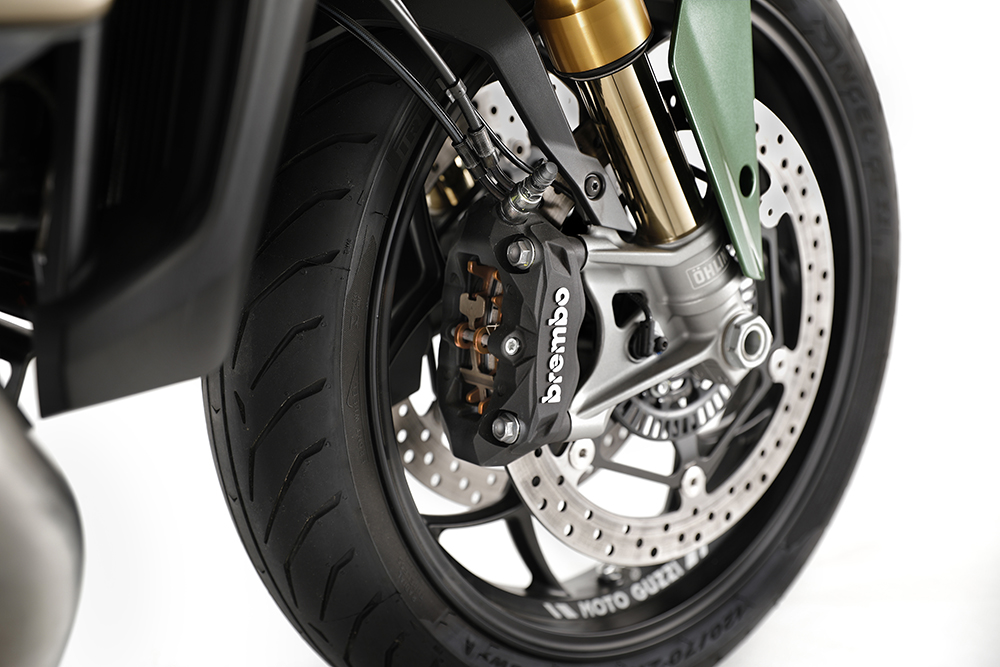
Tipping into a corner is about the only time the V100 makes its weight known. This could be down to the standard Pirelli Angel GT II tyres which, considering the sporting capabilities of the Mandello, are probably not up to the scratching level that the V100 is capable of – stickier hoops would be on my shopping list.

Gizmo time! This is a big area for Moto Guzzi, because the V100 carries a suite of electronics never before seen on a Guzzi which brings the Mandello up to speed with all but the most tech-heavy bikes on the market. Let’s start with the much-hyped adaptive aerodynamic wings. Unlike most of the wings appearing on motorcycles these days, the Mandello’s wings aren’t designed to offer downforce, but rather to provide protection from the elements.
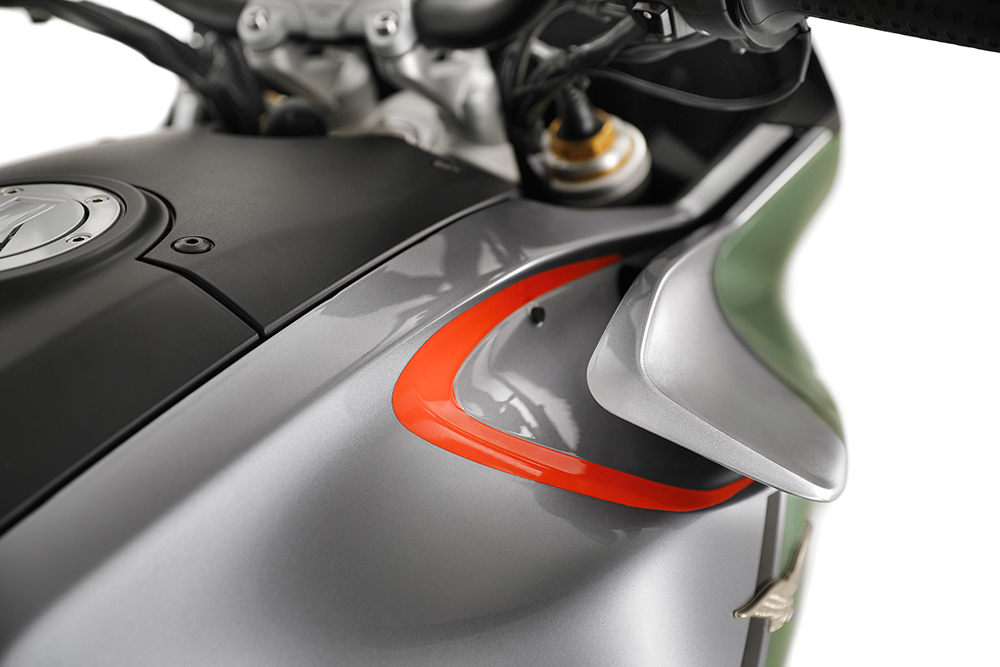
According to Guzzi, once the wings are deployed and the electronically adjustable screen is at its top setting, the two elements reduce air pressure on the rider by 22 percent. The wings work automatically depending on which mode you’re in, although they can be turned off and you can adjust them to deploy once you reach a certain speed. Do they work? Well, they open and shut, but as for whether they keep you more protected from wind and rain, I’d honestly need a bit more time on the bike to determine that. Either way, it’s not noticeable to the point where I’m convinced of the real-world relevance.

However, I am convinced by the whole raft of neat tech as a result of the ride-by-wire throttle and six-axis IMU. There are four ride modes in Tour, Rain, Road and Sport, each with a different engine map. You get full power in each mode, just the delivery is altered. Hopping into the menu on the five-inch TFT lets you adjust the engine map, traction control, engine braking and wing settings within each mode. On the S model, you can also adjust the parameters of the brilliant Öhlins semi-active suspension.

The dash is straightforward to use once you’ve played around with it for a while, and offers Bluetooth connectivity so you can screen your calls and messages, control your tunes and use navigation on the dash.

You get a full deck of LED lighting including cornering lights, a USB charging port and cruise control as standard. The S also sports tyre-pressure monitoring, the previously mentioned two-way quickshifter as well as heated grips.
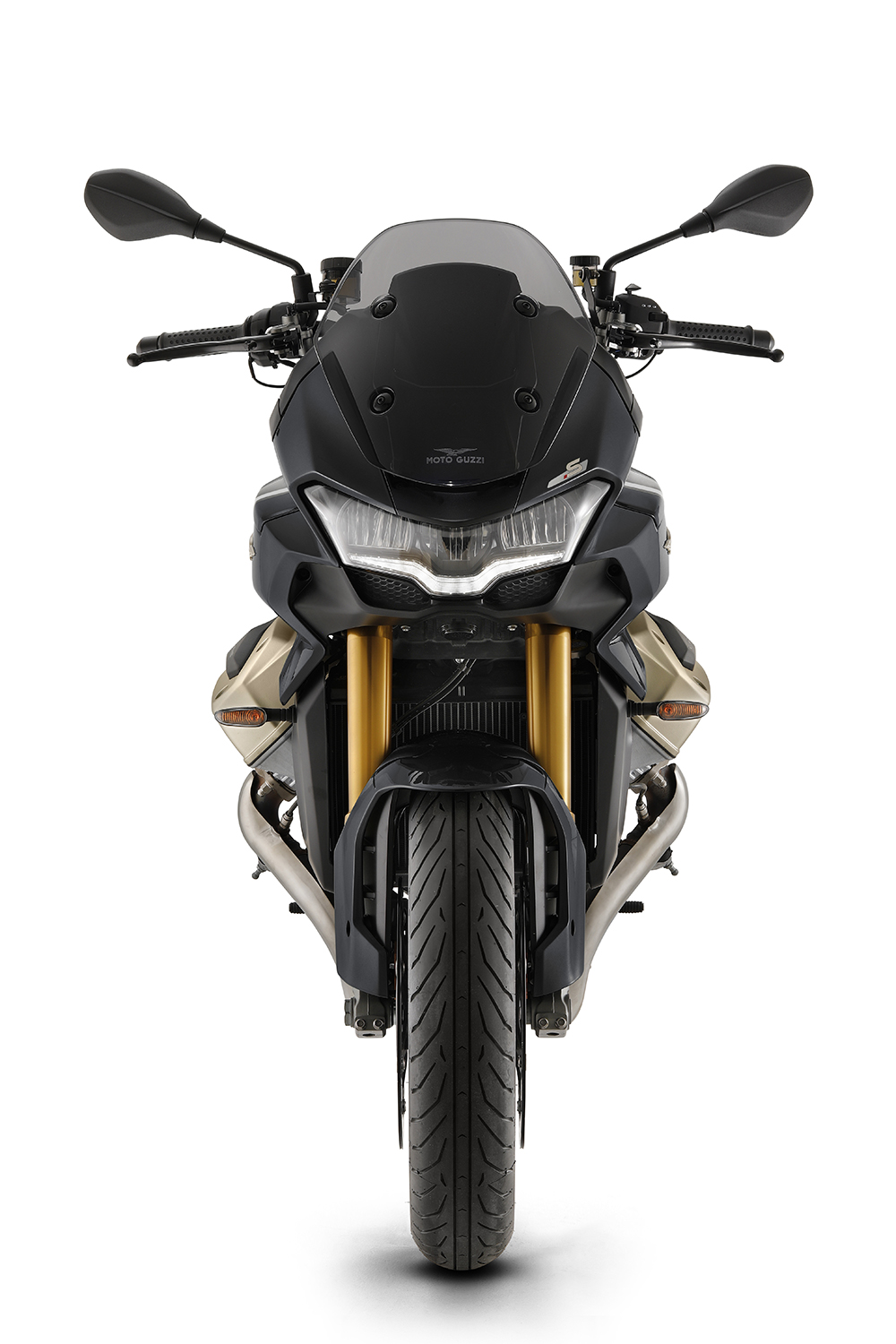
For the most part everything is as it should be in the neat and roomy cockpit. However, having to go into the menu to adjust the screen or heated hand grips is less than desirable. And while I’m complaining, the grips don’t get warm enough to make any real difference and, what’s worse, the grips default to off when you turn the bike off, so you need to go back into the menu and turn them on after every fuel, wee or coffee stop.
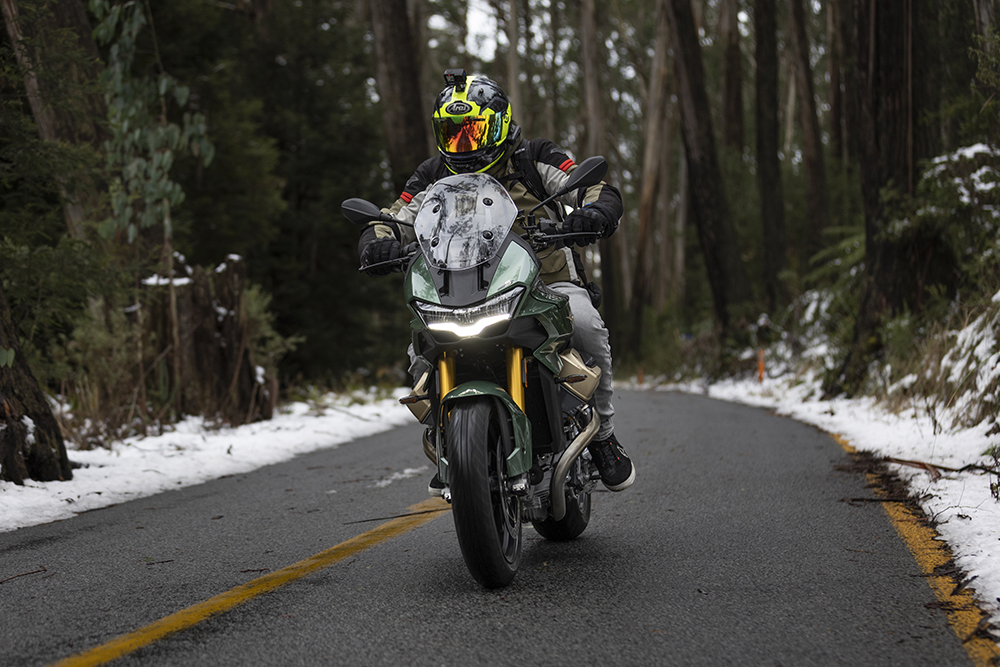
I’ve touched a lot on how sporty the V100 is but that’s not all it has to offer. Despite the marketing blurb, the V100 is a sports-tourer through and through. It’s as comfortable as any comparable sports-tourer, the seat is firm but comfortable and the reach to the wide one-piece ’bar is both relaxed and sporty.

Oh, and the pillion accommodation looks, well, accommodating. If touring is your bag, Guzzi has a set of colour-coded hard panniers in the list of options that slot straight into built-in mounting points on the bike.

The Mandello is by far the most impressive Guzzi I’ve ever ridden. It’s high-tech and modern but Moto Guzzi has managed to build a bike that incorporates modern conveniences and performance without losing too much of the Guzzi character. No longer is Moto Guzzi the domain of motorcycling’s fringe dwellers, and I reckon there’ll be a whole new cohort of future Guzzi owners thanks to the V100. It’s a special bike, one full of character and performance – it will be interesting to see if the Guzzi faithful will embrace it?

TEST: PETE VORST PHOTOGRAPHY DEAN WALTERS

